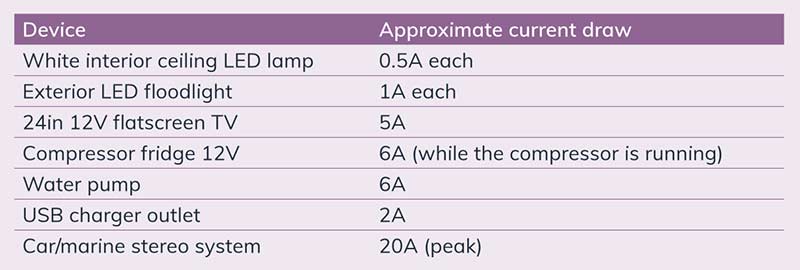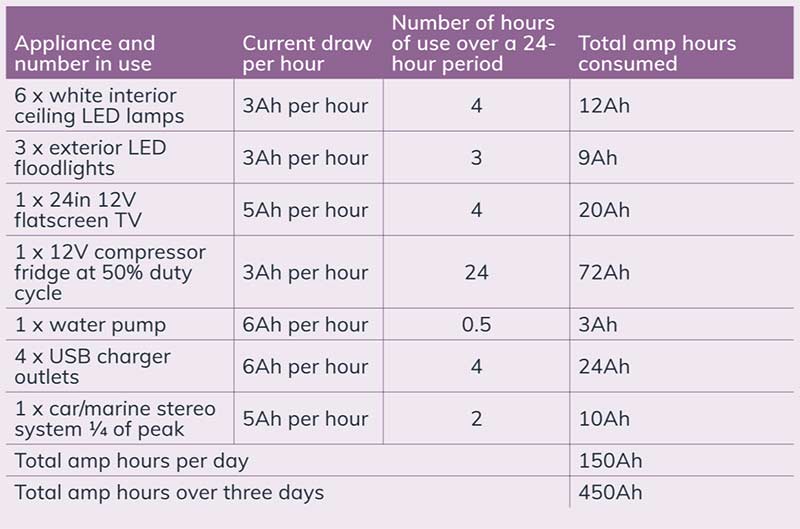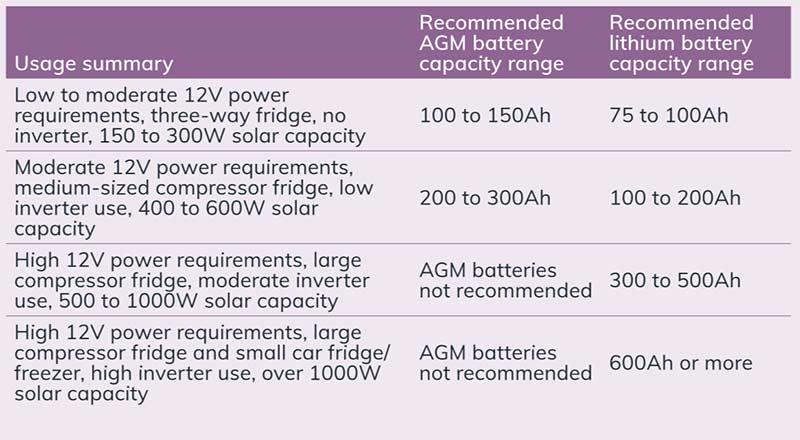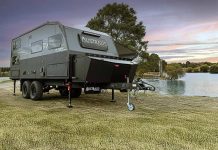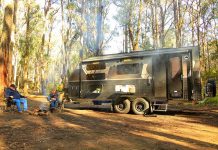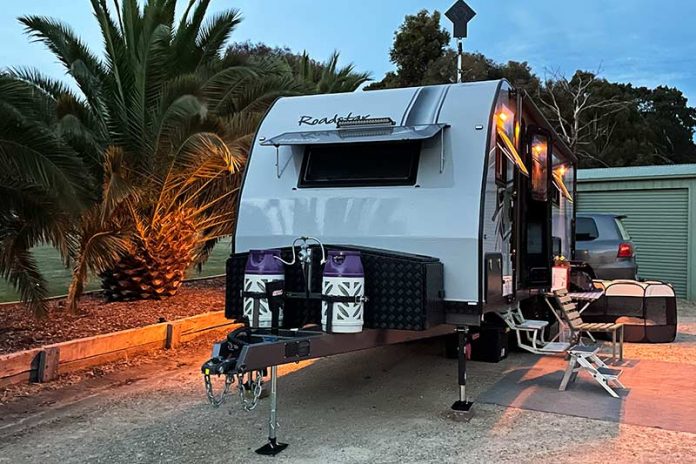
I remember when I bought my first camper trailer. It was a fairly basic affair. Not much more than a 6×4 trailer with a heavy axle and big 4WD wheels and tyres. The list of options wasn’t long. A drop-down table on the tailgate made do as a ‘kitchen’. The other option was a tray to hold a 12V battery. I thought that might be a handy thing to have so I had it added to the build.
The point of this nostalgia is to emphasise the point that, back in those days, no one gave much thought to the type of battery to fit or how much capacity it had. It was just going to power a couple of camp lights and perhaps an air pump or, in my case, a 12V portable black and white TV. That was about it. Any 12V battery would do. How times have changed!
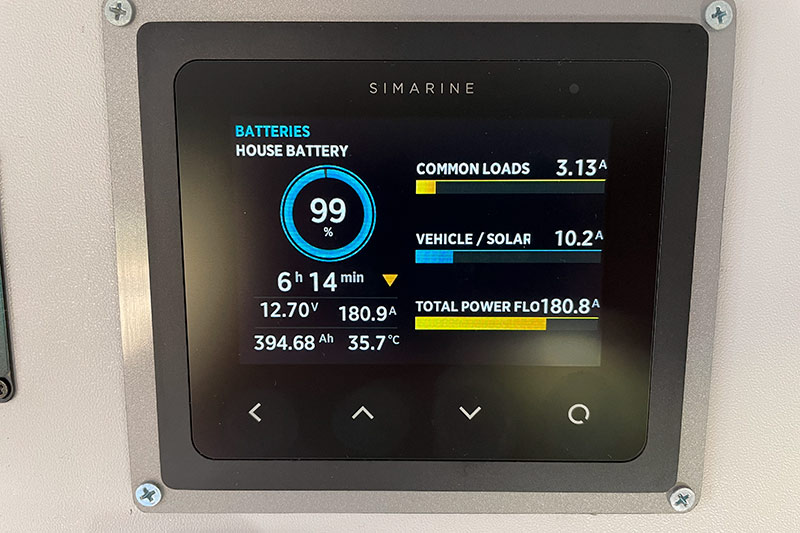
Today, our caravans, and even many camper trailers, are virtually homes on the road. They have all the tech, gadgets and appliances that we are supposed to leave at home when on holiday. If you’re camped at a caravan park, it really isn’t an issue, but if you want to do any free-camping, the size and type of battery you fit into your RV is probably the most critical decision you can make. In this feature, we want to give you the absolute basic guide to sizing up a battery for your RV.
WHAT IS A BATTERY?
This may seem like a dumb question but stick with me because this is important. A battery is a storage device for electricity in much the same way as a water tank is a storage system for water.
The difference is, instead of storing litres of liquid, a battery stores amp hours of electricity. The reason we rate a battery’s capacity as a function of time will become obvious later. For now, you can think of a 100Ah battery in much the same way as a 100L water tank.
Why do we rate caravan batteries in amp hours, not just amps?
Electricity is not water, obviously. Unlike electricity, water occupies a space. You fill up a water tank and the water takes up the space inside. Electricity is the movement of electrons through a substance, like the metal in wires or the chemicals inside a battery. The more electricity that passes through a substance, the higher the amps. Batteries are all about how many amps you release over time. This is why we rate them in amp hours.
How does charging and discharging a caravan battery work?
Going back to our water tank analogy, consider how a garden watering system might work. Let’s say you have a 100L water tank full of water and you attach an outlet hose and sprinklers to water the garden.
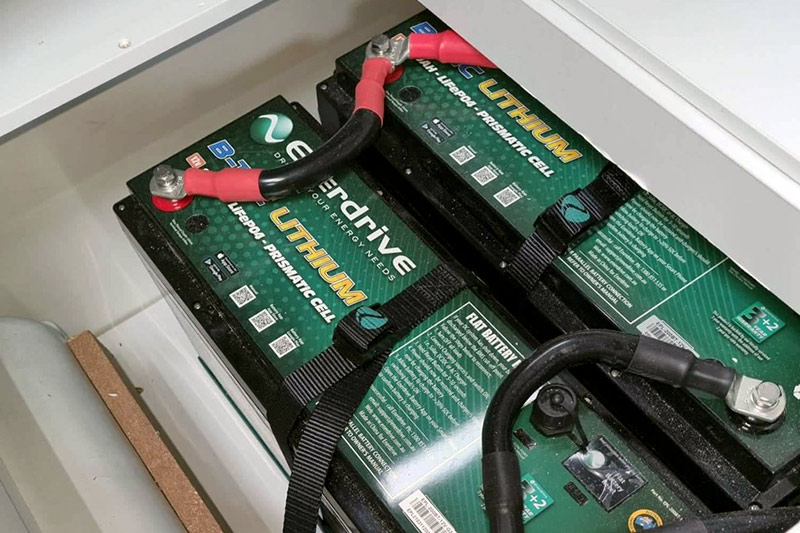
Sprinklers come in different sizes. The larger they are, the more water they use. They are rated in litres per minute. So if you have a 100L water tank and you have a single sprinkler rated at 10L per minute, you can water your garden with that sprinkler for 10 minutes before you will run out of water.
It’s the same with batteries. If you have a 100Ah battery and you run a TV that draws 10A continuously from it, you can watch television for 10 hours before your battery is completely flat.
This is great but what does it all mean in the real world?
First, you’re unlikely to be running just one television. You’re going to want to run all sorts of devices for differing lengths of time. This will ultimately determine how much battery capacity you are going to need.
Let’s look at some of the more common 12V electrical devices and how many amps they draw.
Each of those devices will be run for varying lengths of time. For instance, you might have three exterior floodlights but you might only run them for two hours a night. While they are on, they are drawing 3A each and, over 2 hours, each will take 6Ah out of your caravan battery.
On the other hand, you will likely be running your fridge continuously and, as noted, the compressor draws 6A. However, fridges don’t need the compressor to run all the time. It automatically turns on and off depending on the setting and the ambient temperature. This is called a duty cycle. In cool weather, the compressor might run for only 30 minutes every hour and use 3Ah per hour. Over a 24-hour period, that works out to (24×3) 72Ah in total.
WORKING IT OUT
I think you can see where this is going…
To determine how much battery capacity you need, you have to estimate how many devices you will run and for how long each day. Add all that together and then multiply the figure by the number of days you want to run everything for. Here’s a typical example:
Now, you might look at the above table and think a 100Ah caravan battery will not last a day, let alone three days. And you would be right, but remember we haven’t yet factored in any recharging.
You may have a decent solar charging system in your caravan but if you get two or three days in a row of rainy weather, you’re not going to get a lot of recharging, if any at all.
On the other hand, you might look at the example above and reconsider the usage of your appliances so that you use much fewer amp hours over a 24-hour period, especially if you know the weather is going to be bad. You might be able to reduce your power usage during the 24-hour period to less than 100 amp hours in total.
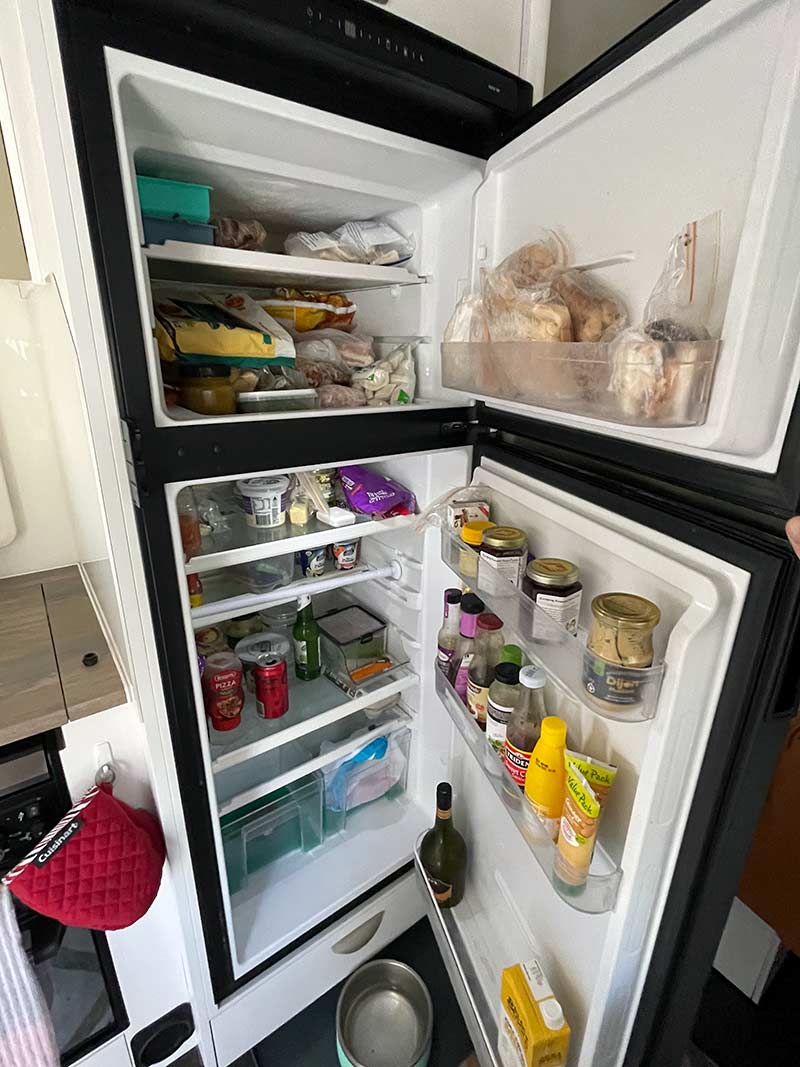
By a long margin, a compressor fridge is the highest power-consuming appliance in the above example. It is also surprising to see how much battery capacity a TV and recharging a few mobile phones will use.
Keep in mind, you may have a three-way fridge that can be run on gas while off-grid. That virtually halves the total amp hours consumed per day, meaning a smaller battery will suffice.
USING AN INVERTER
Appliances requiring 240V power are generally rated in watts. For example, a typical microwave fitted to most caravans will be rated at 900W. If you want to know how many amps will be drawn from your 12W battery, simply divide the watt rating by 10. In this case, the microwave will draw around 90 amps while operating.
That sounds like a lot, and it is, but remember you only use a microwave for short periods of time. If you ran the microwave for just five minutes a day, or 1/12 of an hour, it would only take out about 7.5Ah out of the battery in total. The same could be said about similar appliances, like coffee machines or electric kettles.
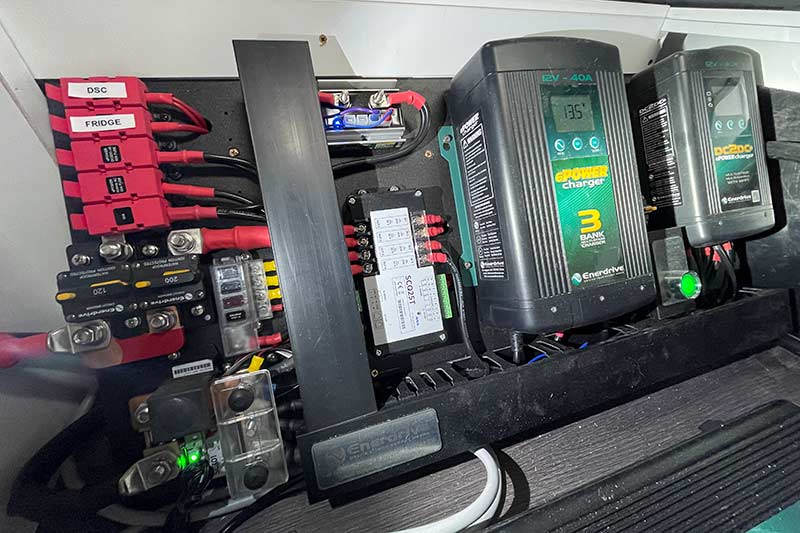
Other appliances, such as air fryers, induction cooktops or air conditioners, use more power again, and are used for longer periods of time. If you were to run one of these from an inverter, you could make a huge dent in your caravan battery’s state of charge (SOC). For example, if you ran a 1200W air fryer for 20 minutes (1/3 of an hour), it would take 40Ah from your battery.
A WORD ABOUT CARAVAN BATTERY TYPES
If you order a new RV today, it is likely that you will be given the choice between fitting AGM or lithium batteries. While it is theoretically possible to completely drain either type of battery to 0 per cent SOC, it’s not something you want to do every day.
As a rule, you want to avoid discharging AGM batteries below 40 per cent SOC and lithium batteries below 10 per cent SOC. This varies with the quality of the battery and, in the case of lithium batteries, they have an internal management system that will isolate the battery at around 10 per cent SOC before it is fully depleted.
RECOMMENDATIONS
Trying to come up with caravan battery recommendations that would suit everyone is difficult as we all have different power requirements. That said, I believe we can provide a general indication of the minimum capacity battery you will need based on approximate power requirements.


